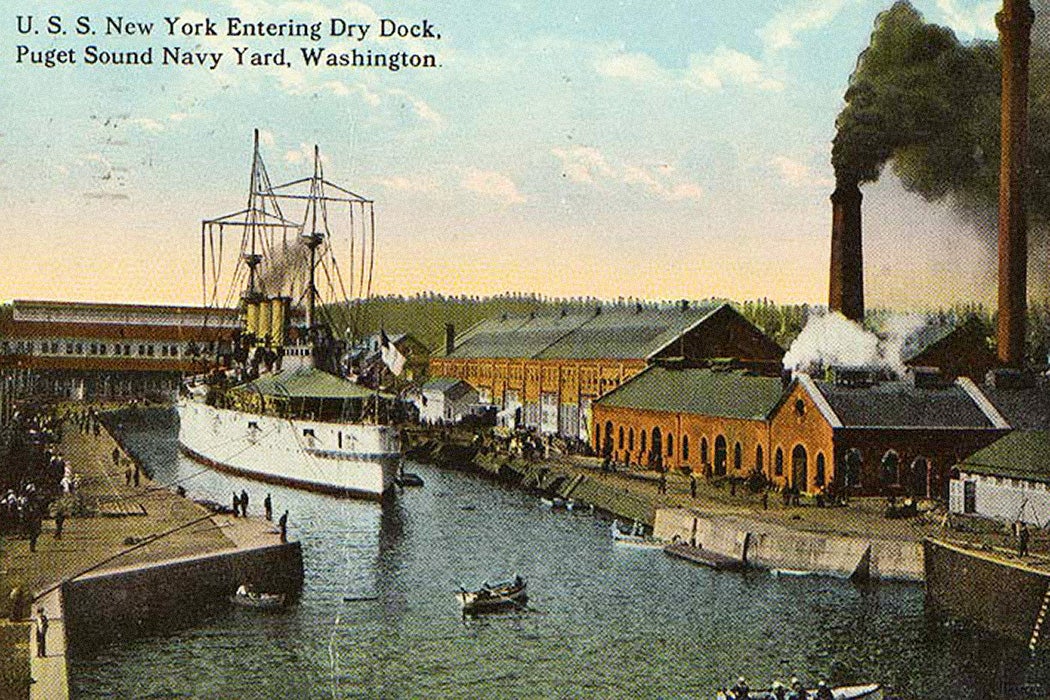Can Seattle be considered a postcolonial city, despite its location in the continental United States? For historian Dorothy Fujita-Rony, who cites the city’s “pivotal role in US military development in the Pacific” for Filipino workers, the answer is a resounding yes.
The story of Seattle is shaped by “the relationship between the United States as former colonizer and the Philippines as former colony,” she explains. For the thousands of men and women who left for new livelihoods after the American conquest of the Philippines, “journeying to Seattle meant heading to a metropole and a site of power.”
As a major port on the West Coast, nineteenth-century Seattle was where newly arrived Filipino laborers disembarked before heading to the farms of California or the canneries of Alaska. With temporary housing options and an established social network, Seattle provided “a relatively secure haven for the migratory laborer passing through, especially given the racism of the time.” Besides being a “significant node in this migratory circuit,” however, Seattle was also important for Filipino colonial subjects since “[m]any Filipinos came to the United States to enlist in the military or to work on local military bases” in the early twentieth century.
Fujita-Rony recounts that, “as part of its expanding focus on the Pacific region,” the United States established a naval yard on the Kitsap Peninsula in 1891. This was followed by Fort Lawton and other installations around Puget Sound, and, later, Fort Lewis, south of Tacoma, in 1917. Since 1901, the US Navy had recruited Filipinos into its ranks, where they served mainly as stewards. Once Fort Lewis was built—a feat accomplished with the help of Filipino labor—Filipinos were also employed by the Pacific Commissary Company as food servers at the fort.
The service roles that were allotted to Filipinos “illustrat[e] the racial hierarchies that would persist in the military throughout most of the 20th century,” Fujita-Rony notes. Seattle’s shipyards grew in importance during World War II, when hundreds of millions of dollars poured into the economy—and local companies like Boeing—in the form of military spending.
“The navy was a key employer of Filipinos in this militarized urban space, as were other service branches such as the army, coast guard, and air corps,” Fujita-Rony writes. “As a result, new Filipino communities sprang up around defense industry sites and military installations.” She adds that “Filipinos served on the home front as well, illustrating the importance of the military and defense industry for the community” through their labor.
For example, Seattle Filipinas took part in efforts to support the troops “especially in activities then considered ‘appropriate’ for women,” making army uniforms, sleeping bags, or hospital supplies.
Before the war broke out, the Tydings-McDuffie Act of 1934 had turned Filipinos from US nationals into aliens, which made it harder to enter the country, start families, and own land. As such, military service offered Filipinos a valuable alternative path toward American citizenship.
Even after the Philippines became an independent country in 1946, the US military continued to shape Filipino life in Seattle, where the community included veterans and “war brides.” Filipino Americans “also found jobs in the growing aerospace industry, which was heavily dependent on military funding,” Fujita-Rony notes. At the same time, the US continued to maintain a significant postwar military presence in the Philippines—through sites such as Clark Air Base and Subic Bay Naval Station, which famously supported American military operations in Southeast Asia during the Vietnam War.
The US also “maintained heavy influence over the Philippines” during the Cold War, throwing its weight behind President Ferdinand Marcos, who was in power from 1965 to 1986. When Marcos declared martial law in 1972, Filipinos in Seattle and elsewhere in the United States swiftly launched organized protests against his government.
Weekly Newsletter
Marcos’s martial law further “highlighted the transnational political identity of Filipinos living in the United States because of the activism that ensued,” Fujita-Rony argues. “Seattle was a crucial space for political activism that had significance for both the United States and the Philippines.”
Describing Filipino history as “integrated into Seattle’s development,” she concludes that the story of the Pacific Northwest shows the value of “question[ing] narratives that segment the region’s history and interrogat[ing] the role of race, class, colonialism, and postcolonialism more fully.”
In that vein, Fujita-Rony adds, “we should persist in studying Seattle’s ties to the rest of the American postcolonial empire, in the Pacific and elsewhere.”







